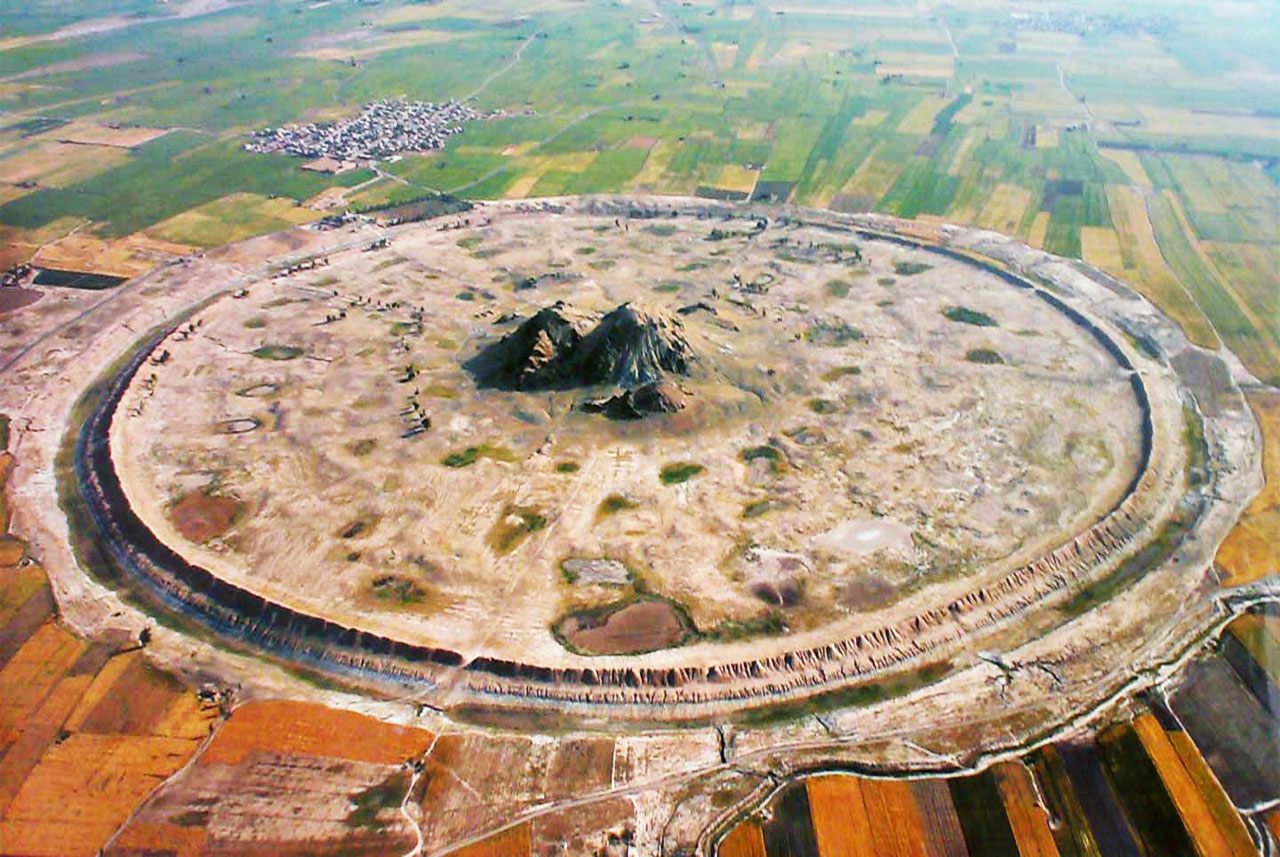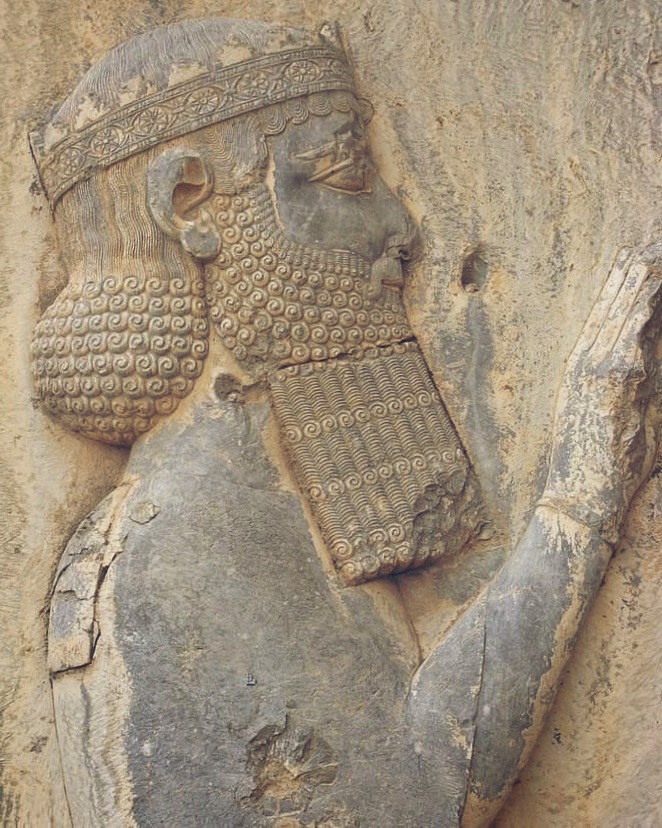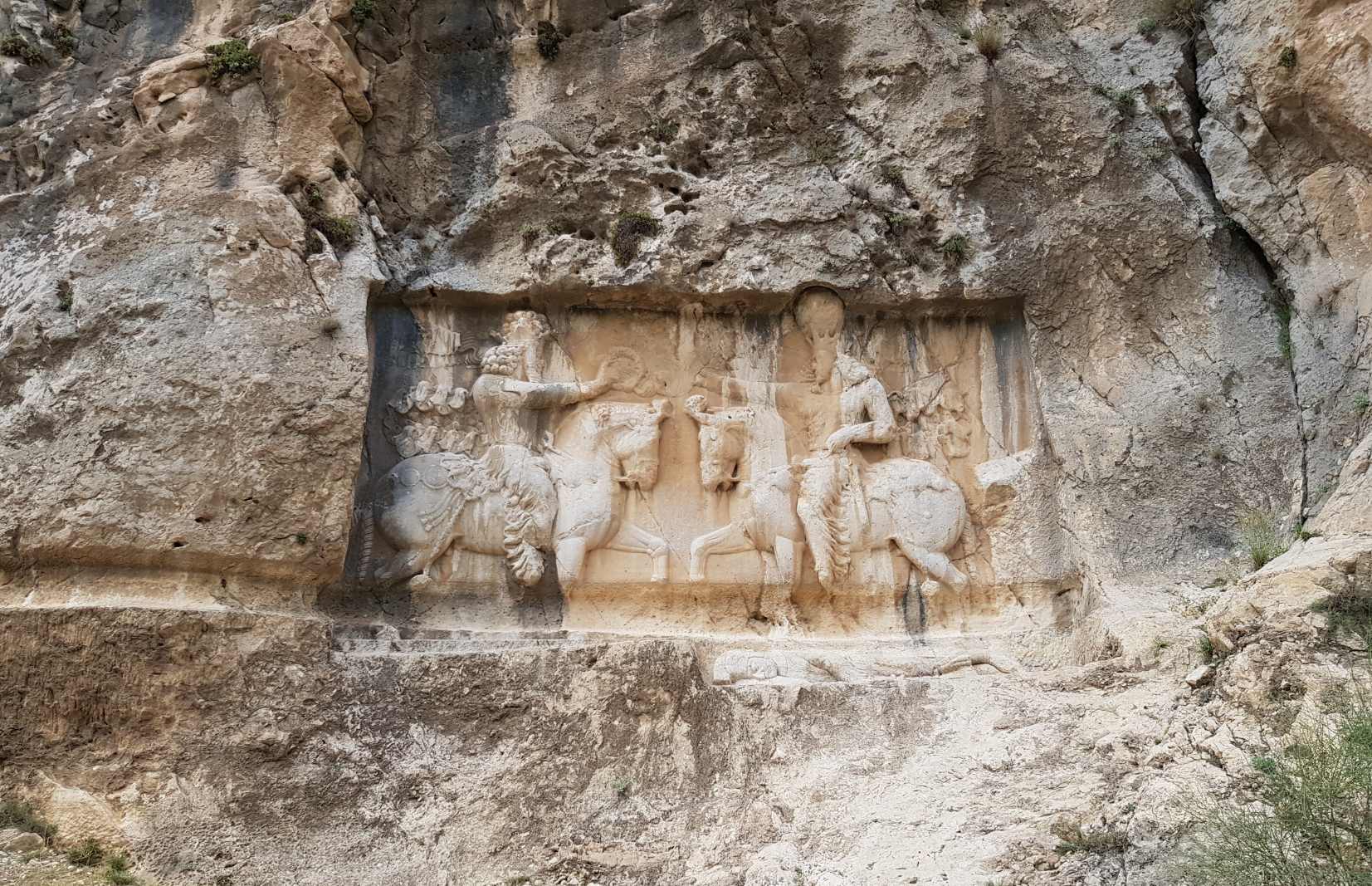Remains of the ancient historical city of Darabgard (Darabjerd/Darabgerd) are situated six kilometers southwest of the modern town of Darab in Fars province, Iran. Mentioned in very ancient literary works of this country, Darabgard was one of the oldest and most prominent cities of the Achaemenid Empire.

A legend ascribes the foundation of the city to Darius the Great (550–486 BC), the third king of the Persian Achaemenid Empire (550–330 BC). However, some other medieval sources suggest that Dara, either an Achaemenid king or one of the Frataraka “maker of fire” or “keeper of fire” rulers of Arsacid Persis, could be the founder of the city, or even Darius III who was the last Achaemenid King of Kings of Persia.

The place’s earlier name was Darabgard (Daráb-gerd, Darius-town, or the land of Darius) – and now, Darab, was not the only town founded by Darius I, but it might have been the first circular structure built by the third king of the Empire and is among old Persian cities having a circular plan and four gates. The idea of planning circular cities is old and dates back to the time of Assyrians, whose famous military camps were circular-shaped enclosures.
However, in Persia, the design of round cities also has a long tradition. According to Herodotus (I. 98), Ecbatana, which was the Median capital in the late 8th century BC, was designed as a circular system; encircled by seven rings of walls. Since the Parthian period, several circular cities such as Hatra and Darabgard are definitely noteworthy.
Darabgard is among old Persian cities having a circular plan and four gates, but so is also an ancient city in Media in western Iran – Ecbatana, which according to Herodotus was chosen as the Medes’ capital in the late 8th century BC by a Median king, Deioces.
The governmental citadel was located at the top of the dome-shaped mountain. This city was protected by a very high circular rampart and also a deep trench. Today, in the vicinity of the city, there are some remains of the citadel in form of earthworks arranged in a circle around an isolated rock and a giant bas-relief, carved on the vertical face of a rock, representing the victory of the Sasanian king Shapur I over the Roman emperor Valerian in 260 AD.

There are also three fortresses north of the Darabgard archaeological site. Around this ancient city, there is a huge conical wall (originally more than 10m high) built of stone, lime, and clay. Today, the erosion process damaged the wall, which is only 7m high but the construction managed to survive more than 2,000 years.
The salt dome of the ancient city of Darabgard is surrounded by a round wall that stands at the center of the vast, green plain of Darab but once was at the center of the ancient town.
During the Sasanid period (considered the peak of ancient Iranian culture), Darabgard was an important capital city of Darabgerd-Khurreh, and widely known for the manufacture of jasmine oil, textiles, famous carpets, and valuable mineral salts.
However, the most famous and also most valuable product of Darabgard was a highly unique bituminous mineral oil, probably collected in the city or in the nearby mountains, and used as medicine.
Other ancient sources say that the original shape of Darabgard (probably more than 2,500-year-old was triangular, not circular. However, archeological evidence indicates that Darabgard was neither perfect geometrically nor did it have a concentric or radial system of streets. In the 12th century, Darabgard was completely abandoned.




